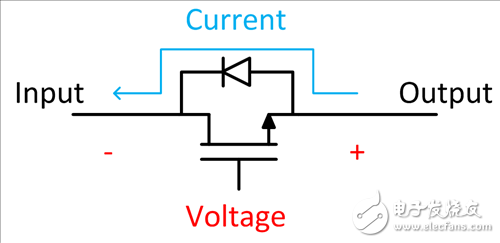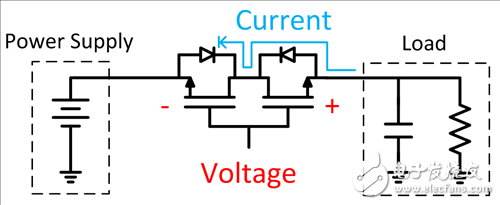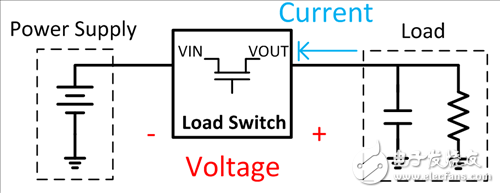When using electronic components, you sometimes inevitably smell the burning of the chip. This is the fault of reverse current. The reverse current is due to the high reverse bias voltage, and the current in the system operates in the opposite direction; from output to input. Fortunately, there are many ways to protect your system from reverse currents. This is the first article in the Reverse Current Protection series of blog posts. In this article, you will be able to have a high level of overall understanding and understanding of existing solutions.
the reason
The most common cause of reverse current, the reverse bias voltage, is that the voltage on the output is higher than the voltage on the input, so that the current flows in the system in the opposite direction of the flow you want. This is shown in Figure 1.

Figure 1: Reverse current
VIN This can happen because the power loss suddenly becomes zero, making the voltage at the system output higher than the input voltage. Or the power supply MUXing unexpectedly caused a reverse voltage event.
How to prevent it?
Reverse current can damage power sources such as internal circuits and batteries. In fact, even cables can be damaged and the performance of the connector can be reduced. This is also the reason for the device's ignition, because the high current causes the power dissipation to rise exponentially.
The protection function needs to keep the reverse current at a very low level. This means a limit on the reverse voltage. There are three common ways to prevent reverse current: design a system that uses diodes, FETs, or load switches.
diode
Compared to FETs, diodes are less expensive and easier to integrate. They are ideal for high voltage, low current applications. However, if you have used a diode, you must be very familiar with the forward voltage drop it causes, which will shorten the battery life and cause the VCC (usually) to drop by about 0.6-0.8V. This voltage drop reduces the efficiency of the power supply circuit and increases the overall power dissipation of the system.
For these reasons, Schottky diodes are a common replacement; they have a lower forward voltage drop. However, they are also more expensive and have higher reverse current leakage, which can cause system problems. Figure 2 shows a diode in the system that blocks the reverse current.

Figure 2: Diode reverse current protection
FET
Due to its low forward voltage and high current handling capability, FETs can help when you have to maintain low power dissipation. For an N-type metal-oxide-semiconductor (NMOS) FET placed in a ground path, you align the body diode with the normal current flow. By using this method, if someone incorrectly installs the battery, the gate voltage is low, which prevents the FET from being turned on. However, when the battery is properly installed, the gate voltage is high and its channel is shorted to ground.
To block current in both directions while the FET is off, you can also connect the FETs back to back. The power-to-load voltage drop is lower compared to the diode solution, but this implementation takes up a lot of board space. Figure 3 shows an example of a back-to-back FET used to block reverse current.

Figure 3: Reverse current blocking with dual FETs
Load switch
The TI load switch is an integrated electronic repeater that turns the power rail on and off. Most basic load switches are available in a small, integrated package consisting of four pins: input voltage, output voltage, enable, and ground, and include multiple features with reverse current protection. Figure 4 shows a load switch used to block reverse current.

Figure 4: Load Switch Reverse Current Protection
For example, Texas Instruments' TPS22963 3A load switch integrates reverse current protection and more, all in a single 1.4mm x .9mm package. Figure 5 shows the common placement of the TPS22963 in the system.

Figure 5: TPS22963 load switch
There are several reasons for reverse current, sudden loss of VIN, or an emergency in power MUXing. This can cause damage to the system and can even damage the power supply. TI load switches can be a size and cost solution for managing reverse current.
Small Solar Street Light,Small Outdoor Solar Light,Solar Charging Light,House Solar Light
t-smartlight , https://www.t-smartlight.com